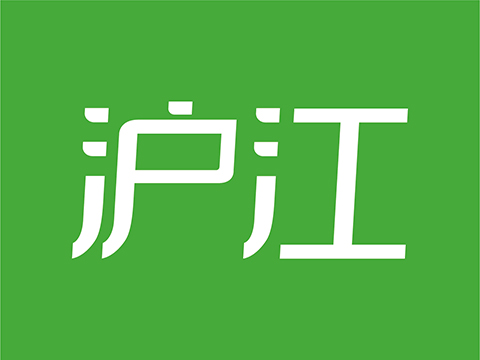Unit 7 Genetics
Section A: Research into Population Genetics
→outlines the conclusions of the book The History and Geography of Human Genes: the first genetic map of the world which scientifically disproves the idea that one race is genetically superior to any other race
Section B: Geniuses and Better Parenting
→considers the myth that geniuses appear out of nowhere and shows that in fact geniuses often receive strong stimulation early in childhood which helps them develop their remarkable talents; discusses which type of parental stimulation is most effective
Section C: Genetics and Environmental Factors in Creating Genius
→sets out some of the research into the question of whether genetics or the child’s environment is most important in creating genius
Nature and nurture
Warm up questions:
What do you think of the mass killing of Jews during WWII?
What caused Hitler to kill millions of Jews?
Do you think black people are inferior to white people? Please give your reasons.
Why were Chinese people once referred to as “the Sick East Asians”?
Do you think one race is genetically superior/ inferior to any other race?
What’s your opinion of racial prejudice in human society?
What do you know about genetic research? Will it have a bright future? Why or why not?
Discussing the text (1): Listen, read and say
What is the main idea of the text?
Can you make a brief introduction to the book The History and Geography of Human Genes?
What difficulties have scientists encountered while getting the information to draw the global family tree?
What remarkable discoveries have scientists made?
What are the new discoveries in terms of the origins of population?
What conclusion has the book drawn concerning the origin of Ethiopians?
What is the significance of the mission of scientists in the study of population genetics?
Discussing the text (2): Text structure analysis
I. The theoretical significance of The History and Geography of Human Genes (Para. 1)
II. The contribution of the book (Para. 2)
III. The difficulties encountered in the process of conducting the research (Paras. 3-4 )
IV. The major contributions of the first genetic map (Paras. 5-9)
V. The conclusion (Para. 10)
I. The theoretical significance of The History and Geography of Human Genes (Para. 1)
o Contains the results of more than 50 years of research in population genetics
a remarkable collection of
the most extensive survey on
o Argues against the theories pushing the genetic superiority of any one population over another
firm conclusion
there is no scientific basis for
II. The contribution of the book (Para. 2)
o Created the first genetic map of the world
Luca Cavalli-Sforza, his colleagues, 16 years
the book, the first genetic map
features 500 maps, areas of genetic similarities
o Traced the routes of early humans’ migration to find the closest thing we have to a global family tree
be closely related
migrate around the earth by the routes of
a global family tree
III. The difficulties encountered in the process of conducting the research (Paras. 3-4 )
o Hard job in establishing the global family tree (3)
information, human blood
various proteins, markers, genetic makeup
scientists, over decades
hundreds of thousands of individuals, 2000 groups, be confined to
as of 1492
o One example of the difficulties in collecting blood sample (4)
ancient, remote, afraid, religious
rural, angry, worried, magic
IV. The major contributions of the first genetic map (Paras. 5-9)
o Major discoveries:
1.
Africans closely related in appearance, most distant genetically
Australians
Southeast Asians most closely resembled in their genes
Europeans
Africans no racial differences, mainly a way to adapt to climate
2. The same map
ancient human bones Africa: the birthplace of…, the starting point of…
3. The Khoisan people: in southern Africa, distant, ancient, unique, primitive, a very ancient mix of west Asians and black Africans, Ethiopia, the Middle East
4. Basques: France, Spain; genes, language, caves, paintings → CroMagnon
Europeans: a mix population, 65% Asian genes, 35%African genes
5. Genetic information: the latest raw material of the medical industry,
DNA, specialized proteins, disease-fighting drugs;
activists, fear
V. The conclusion (Para. 10)
o The research has not only scientific but social value: the ultimate aim is to weaken conventional notions of race that cause racial prejudice.
Discussing the text (3): Vocabulary
o to date: until now
o to date/ up to date/ update/ to the day
o feature n. v.
o migrate/ immigrate/ emigrate
o serve as: fulfill the purpose of
o be confined to: be restricted or kept within certain limits or time
o confine/ refine
o as of/from: (used when a new rule, system or situation will start) starting from
o in effect: in fact
o superficial/ surface
o assume/ presume/ resume/ consume
o resemble/ assemble
o in combination with/ together with
o confirm/ conform
o shed light on: make a problem, etc. easier to understand
o be descended from: have sb as an ancestor
o descend/ ascend
o distinctive (与众不同的, 有特色的)/ distinct (清楚的, 明显的)
o ultimate/ last/ final/ terminal/ eventual
Discussing the text (4): Structure
o more than: not only..., not just…
o nothing less than: exactly the same as
Expressing yourself
o In what ways will the genetics change our life?
o What ethical and legal problems might genetics bring about?
o What should be done to weaken the conventional notions of race that cause racial prejudice?
o Is what the eye sees always true?

新视野大学英语4读写教程教案unit 7Research into Population Genet
2014-02-09 10:05
本文支持点词翻译 Powered by 沪江小D
展开剩余